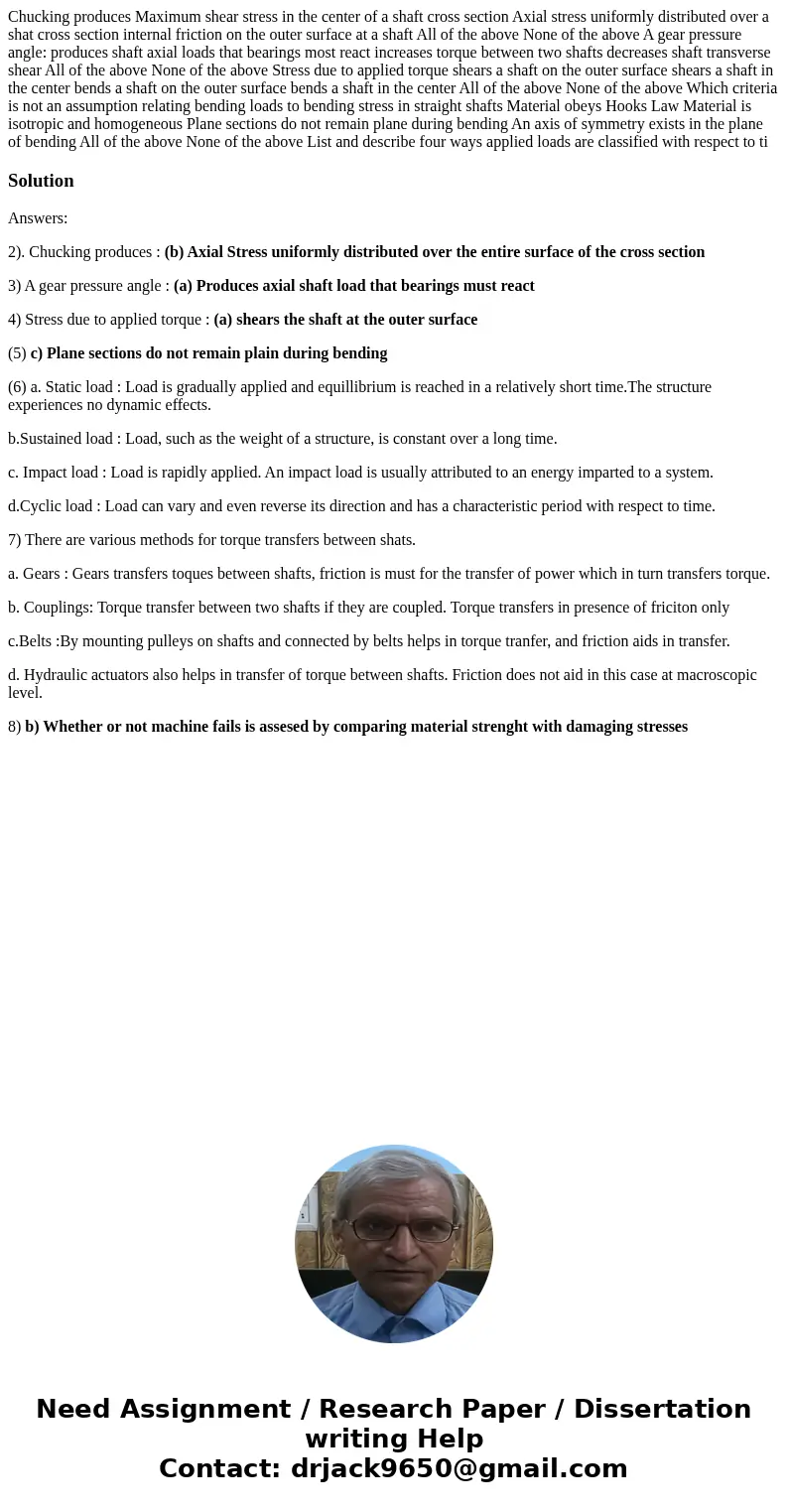Chucking produces Maximum shear stress in the center of a sh
Solution
Answers:
2). Chucking produces : (b) Axial Stress uniformly distributed over the entire surface of the cross section
3) A gear pressure angle : (a) Produces axial shaft load that bearings must react
4) Stress due to applied torque : (a) shears the shaft at the outer surface
(5) c) Plane sections do not remain plain during bending
(6) a. Static load : Load is gradually applied and equillibrium is reached in a relatively short time.The structure experiences no dynamic effects.
b.Sustained load : Load, such as the weight of a structure, is constant over a long time.
c. Impact load : Load is rapidly applied. An impact load is usually attributed to an energy imparted to a system.
d.Cyclic load : Load can vary and even reverse its direction and has a characteristic period with respect to time.
7) There are various methods for torque transfers between shats.
a. Gears : Gears transfers toques between shafts, friction is must for the transfer of power which in turn transfers torque.
b. Couplings: Torque transfer between two shafts if they are coupled. Torque transfers in presence of friciton only
c.Belts :By mounting pulleys on shafts and connected by belts helps in torque tranfer, and friction aids in transfer.
d. Hydraulic actuators also helps in transfer of torque between shafts. Friction does not aid in this case at macroscopic level.
8) b) Whether or not machine fails is assesed by comparing material strenght with damaging stresses

 Homework Sourse
Homework Sourse